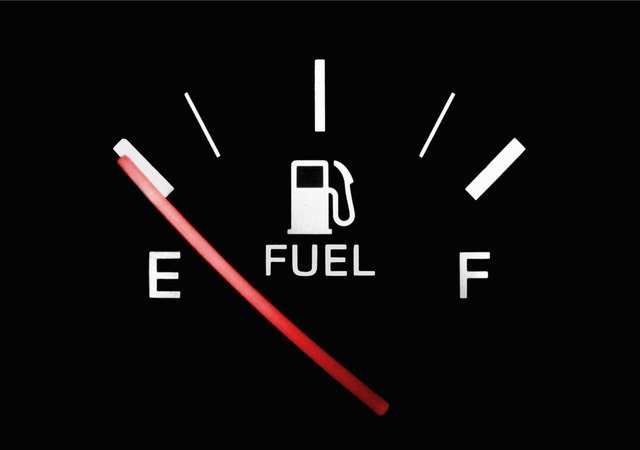So many inflated mpg figures, so many disappointed motorists. How did manufacturers’ fuel economy claims go so wrong — and can we trust the official figures now?

Way back in 2006, a friend of ours bought a shiny new Suzuki Alto. Frankly, it was a pretty terrible car: slow, poorly equipped, flimsy and dull to drive. But on the plus side, the fuel economy figures were (for that time) impressive: Suzuki claimed the Alto would deliver 43.5 mpg around town and 70.6 mpg extra-urban, for an average of 57.6 mpg.
But our friend was disappointed. Over the next decade of ownership, the car only managed around 40-45 mpg, even with plenty of longer trips.
That one underwhelming experience has been repeated millions of times, across all makes of cars. In fact, a 2018 study by Transport and Environment concluded that since 2000, British drivers have shelled out around £22 billion on extra fuel, compared to what the manufacturers’ figures predicted.
On average, the average disparity was a jaw-dropping 42%. Yes, you read that right! How on earth did things get so bad?
Cheating, gaming and the NEDC
The explanation lies in the testing procedure. From 1996 until September 2017, all European vehicles were tested using the New European Driving Cycle. Like previous testing regimes, the NEDC allowed standards to be set for exhaust emissions and gave consumers an objective way of comparing fuel economy.
Unfortunately, the designers of the NEDC didn’t count on the cut-throat world of car manufacturing.
As European fuel costs rocketed, the NEDC fuel economy figures became a key factor in consumers’ buying decisions. Presented with broadly similar models, it was the official fuel economy figures that helped sway car buyers towards one manufacturer or another.
From the CEO downwards, every manufacturer was under pressure to post up compelling figures for their vehicles — jobs, profits and livelihoods depended on it. And it all came down to performing well on the NEDC test.
Under these circumstances, the manufacturers did exactly what you might expect. They carefully analysed the test and what it allowed. Then they used every weapon at their multi-million pound disposal to get good results.
In some cases, there was electronic cheating. This included our own favourite company, though other major manufacturers did the same thing. Much more prevalent, however, was simply gaming the system. In other words, doing things that the test allowed, but which drivers never did in the real world. As the Top Gear website puts it:
[Manufacturers] set up their powertrains to do well at test speeds not real speeds, and test them with the Eco button pressed, making the car so sluggish no one would use it that way. Plus they can accumulate all the little test tolerances in their favour. And they test with tyres pumped dangerously hard…The acceleration [permitted in the test] is so preposterously gentle and the speeds so glacial, you and I will never drive like that.
The consumer organisation Which? even noted that passenger wing mirrors and roof-rails could be removed during the tests to reduce drag.
In short, the NEDC test was simply not fit for purpose, but it took an awfully long time before it was fixed.
Enter the WLTP
Finally, after years of complaints, a new test was brought in. More stringent, more realistic and harder to fool, the Worldwide Harmonised Light Vehicle Test Procedure (WLTP) was adoped by the EU in September 2017. From September 2018, all new car models had to be tested using WLTP.
Compared to the NEDC, the WLTP:
- tests cars for longer distances (14.4 vs 6.8 miles)
- tests at a higher average speed (28.9 vs 21.1 mph)
- includes up to four different driving conditions instead of just two
- takes optional extras into account
- is overseen by an independent body.
There’s no doubt that the WLTP is light-years ahead of its predecessor, and provides motorists with far more trustworthy mpg estimates. As a result of all these changes, mpg figures for nearly every model have dipped considerably.
So…can we finally trust manufacturers’ figures?
The WLTP test is better, but that doesn’t mean it’s completely accurate. In a series of independent real-world tests, What Car? concluded that the WLTP tends to overestimate fuel economy by 4.9%. By the way, it’s worth noting that some of the models on their test actually outperformed their official figures.
So, if the tests still fall short, perhaps drivers would be better off checking sites like Honest John? These aggregate mpg figures submitted by owners — which in theory should give a better indication of real-world performance.
That sounds fantastic, but in our view, there’s a problem. The reviews are submitted without any means of checking their accuracy. That means that we don’t know if fanboys are inflating the figures, haters are reducing them, or if manufacturers themselves are getting in on the act.
Overall, we think you’re better off with the WLTP figures. After all, in the What Car? test, a 4.9% margin of error equated to 2.6 mpg — and that’s nothing to lose sleep over. The WLTP isn’t perfect, but it’s close enough to (finally!) give us a fair estimate.
The WVS blog covers a wide range of automotive topics, from the contentious to the light-hearted. We are an independent garage specialising in all the VW group marques, including Audi, Volkswagen, Skoda and SEAT. WVS provide services, repairs and MOTs, delivering a main dealer level of care at affordable prices. To book your vehicle in, or for any enquiries, get in touch.

